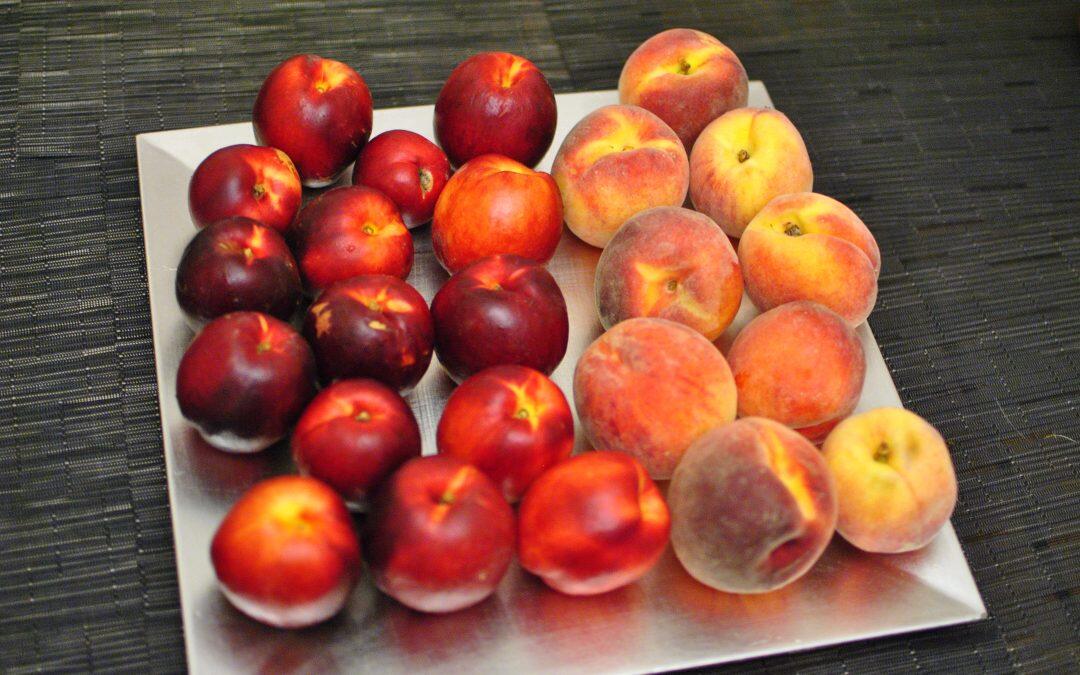Nectarine (Prunus persica), smooth-skinned peach of the family Rosaceae that is grown throughout the warmer temperate regions of both the Northern and Southern hemispheres. A genetic variant of common peaches, the nectarine was most likely domesticated in China more than 4,000 years ago, and nectarine and peach trees are virtually indistinguishable. The expression of a recessive allele is thought to be responsible for the smooth skin of nectarine fruits, which lack the fuzzy trichomes (plant hairs) characteristic of peach fruits. The stones and kernels of the two fruits are alike in appearance and may be freestone types, which have ripe flesh that separates easily from the stone, or clingstones, which have flesh that adheres firmly to the stone. Nectarines have red, yellow, or white flesh and are a source of vitamins A and C. They are commonly eaten fresh or cooked in conserves, jams, and pies.
When peaches are crossed or self-pollinated, resulting seeds that carry the recessive allele for smooth skin will give rise to nectarines, while those that carry the dominant allele will be peaches. Nectarines may sometimes appear on peach trees as a result of the process of bud variation, or bud sporting, a vegetative deviation from the normal. Cultivation of nectarines is essentially the same as for peaches, with best results usually obtained on well-drained sandy or gravelly loams enriched with nitrogen.
The main physical difference is that peaches have a fuzzy coating, whereas nectarines are smooth and do not have this coating. They are almost identical genetically, but there is a gene variant between the two.
Peaches have a dominant allele (variant form of a gene), which results in the soft, fuzzy coating on the outside. They can be freestone, which means the pit falls easily away from the flesh, or clingstone, where the pits stay stuck to the flesh. Peaches can come in yellow or white varieties.











